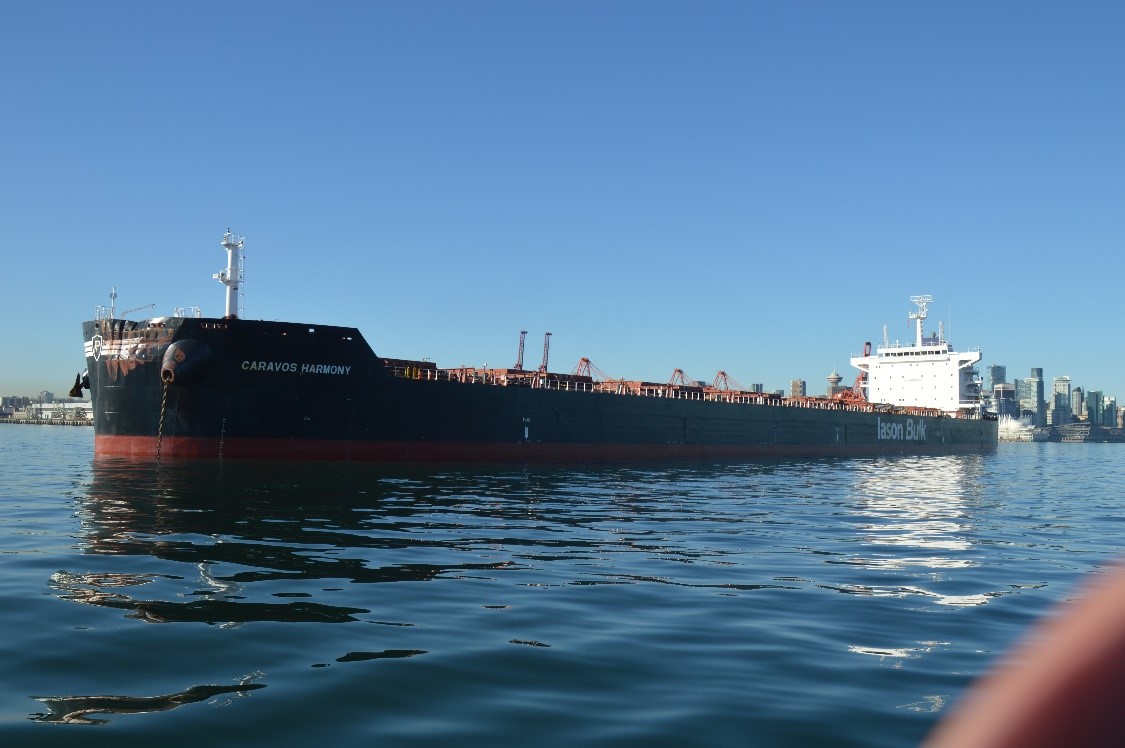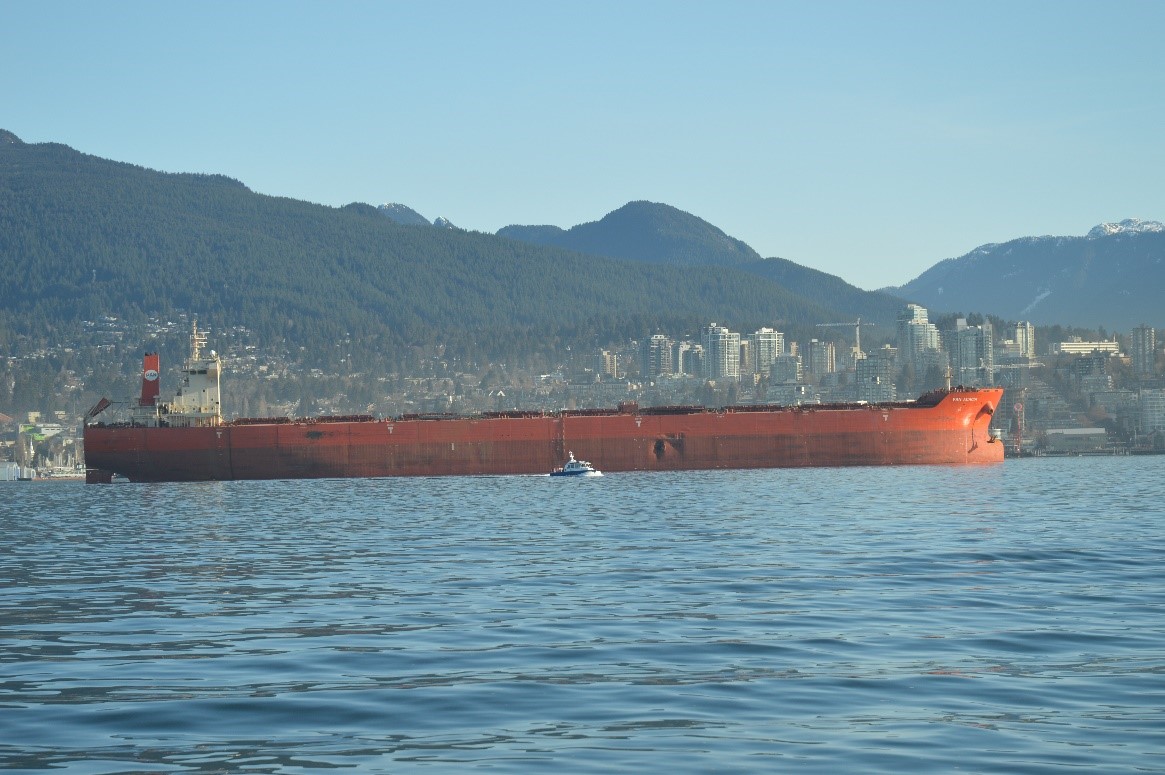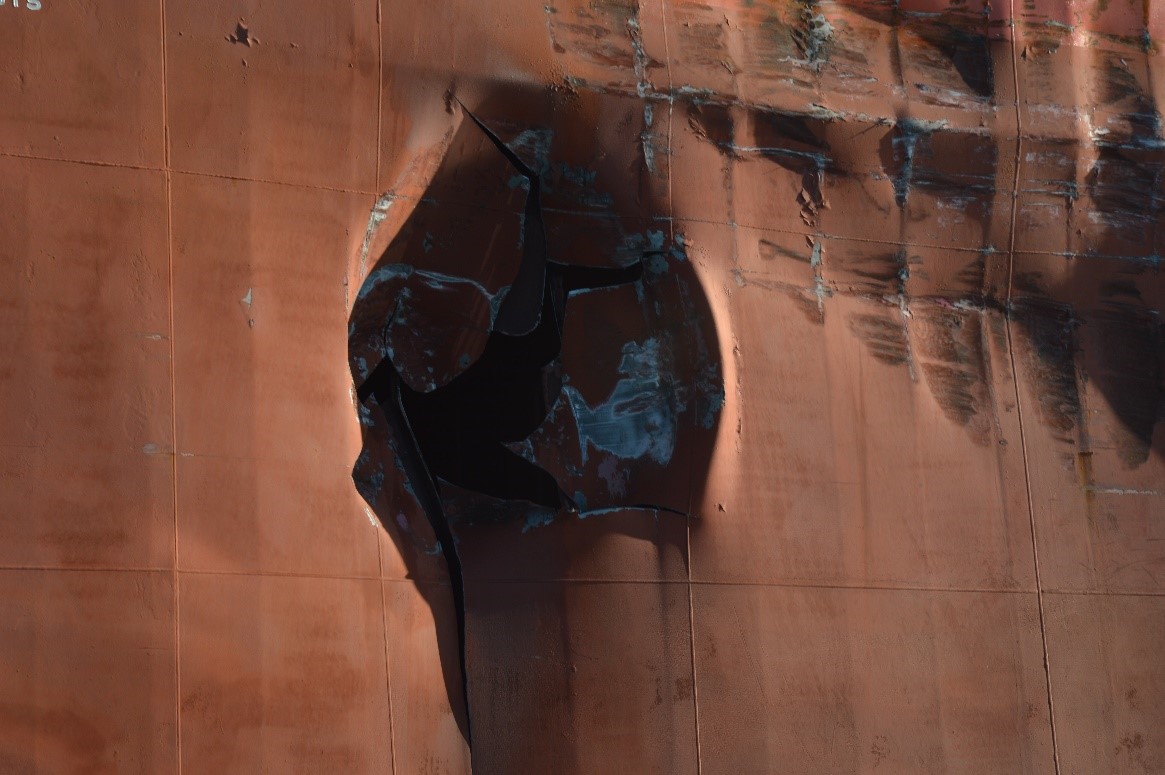Striking of the anchored vessel Pan Acacia
Bulk carrier Caravos Harmony
Vancouver Harbour, British Columbia
The occurrence
On 17 March 2019, the bulk carrier Caravos Harmony, under the conduct of a pilot, was proceeding to an anchorage in Vancouver Harbour, British Columbia, when it struck the anchored bulk carrier Pan Acacia. Both vessels sustained damage. No pollution or injuries were reported.
Media materials
News releases
Breakdowns in situational awareness and communications were key factors leading to a striking in Vancouver Harbour
Read the news release
Deployment notice
TSB deploys a team to Vancouver Harbour, British Columbia, following a collision between 2 vessels
The Transportation Safety Board of Canada (TSB) is deploying a team of investigators to Vancouver Harbour, British Columbia, following the collision between the M.V. Caravos Harmony and the M.V. Pan Acacia. The occurrence took place on March 17, 2019 at approximately 00:20 local time. The TSB will gather information and assess the occurrence.
Investigation information
Download high-resolution photos from the TSB Flickr page.
Class of investigation
This is a class 3 investigation. These investigations analyze a small number of safety issues, and may result in recommendations. Class 3 investigations are generally completed within 450 days. For more information, see the Policy on Occurrence Classification.
TSB investigation process
There are 3 phases to a TSB investigation
- Field phase: a team of investigators examines the occurrence site and wreckage, interviews witnesses and collects pertinent information.
- Examination and analysis phase: the TSB reviews pertinent records, tests components of the wreckage in the lab, determines the sequence of events and identifies safety deficiencies. When safety deficiencies are suspected or confirmed, the TSB advises the appropriate authority without waiting until publication of the final report.
- Report phase: a confidential draft report is approved by the Board and sent to persons and corporations who are directly concerned by the report. They then have the opportunity to dispute or correct information they believe to be incorrect. The Board considers all representations before approving the final report, which is subsequently released to the public.
For more information, see our Investigation process page.
The TSB is an independent agency that investigates air, marine, pipeline, and rail transportation occurrences. Its sole aim is the advancement of transportation safety. It is not the function of the Board to assign fault or determine civil or criminal liability.


